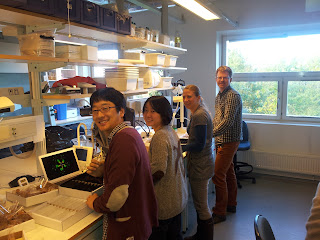Navy dropwing (Trithemis furva). Photo: Erik Svensson
Posted by Erik Svensson
During the lab-meeting next week (Tuesday April 2), I will show some nature pictures from our recent research and field work trip to eastern South Africa (from the provinces of KwaZulu Natal, Mupalanga and Limpopo) that I recently did with Anna Nordén, John Waller and Johannis Danielsen.
After that, we will discuss a recent essay in PLoS Biology, entitled "Evolutionary Biology for the 21th Century", authored by Losos et al. This paper is published "Open Acess", and can be accessed here.
This thought-provoking essay should be an must-read for anyone interested in the future of the general research field of evolutionary biology. The paper has already sparked some interest in the bloggosphere, such as here and here. Of particular interest is their coining of a new term - "Biodiversity informatics", and what it might entail.
The more general questions, I think, are these: are the authors likely to be correct in their predictions about the future of our field, and if not, what have they missed? And where are we in this picture in our research group in relation to the rest of the evolutionary biology research community? How could we contribute?
Time: Tuesday April 2, 10.30
Place: "Argumentet", 2nd floor (Ecology Building)
Final reminder to Anna and John: could you bring fika? Also, send some of your best pictures to me well before Tuesday, so I can put them together in to our slide show.


